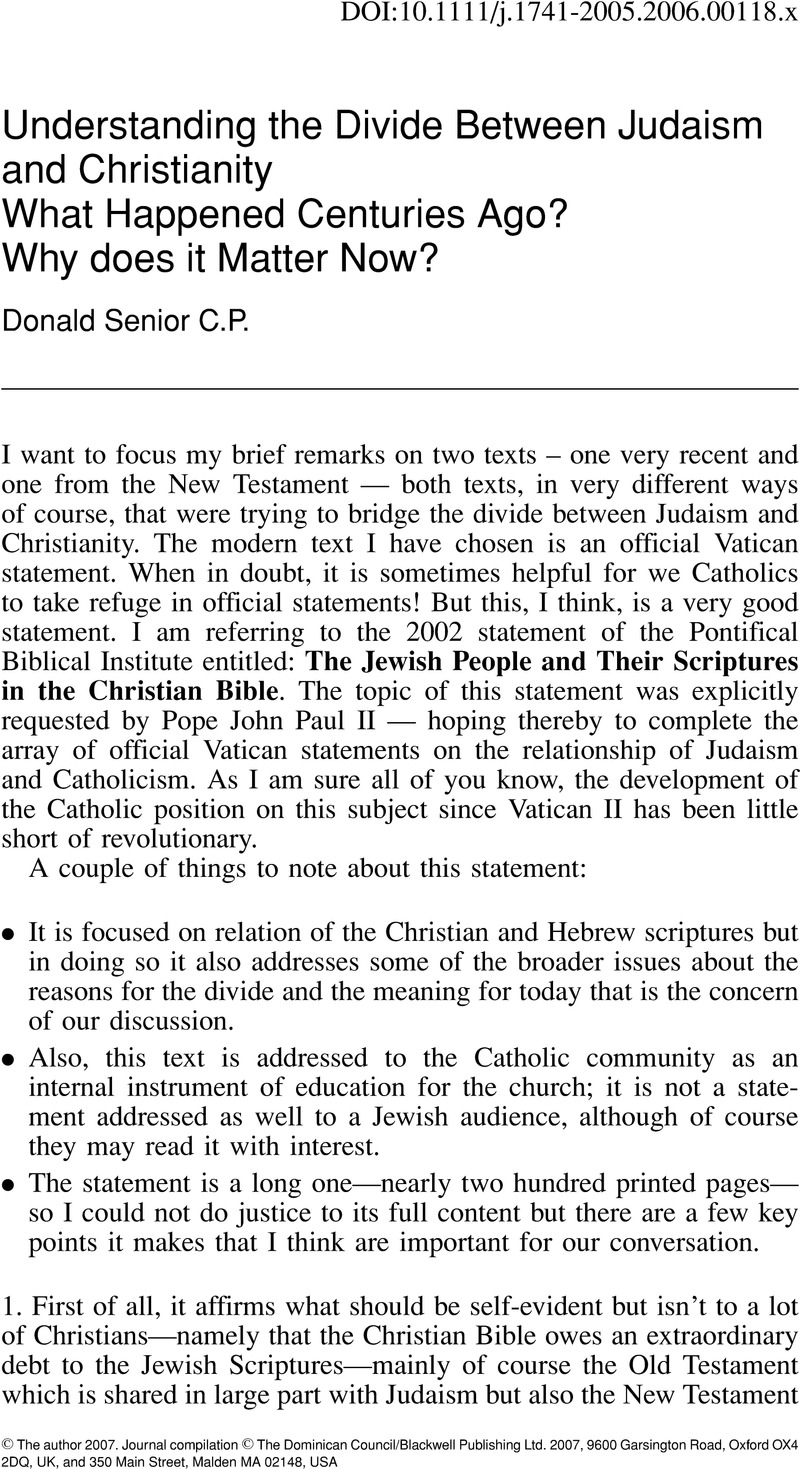No CrossRef data available.
Article contents
Understanding the Divide Between Judaism and Christianity: What Happened Centuries Ago? Why does it Matter Now?
Published online by Cambridge University Press: 01 January 2024
Abstract
An abstract is not available for this content so a preview has been provided. Please use the Get access link above for information on how to access this content.

- Type
- Original Articles
- Information
- Copyright
- Copyright © The author 2007. Journal compilation © The Dominican Council/Blackwell Publishing Ltd. 2007


